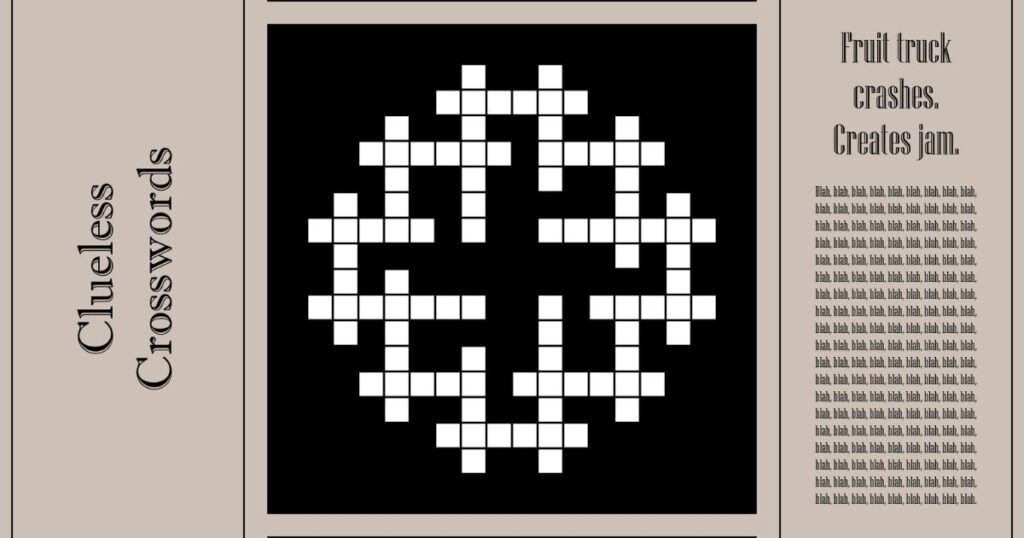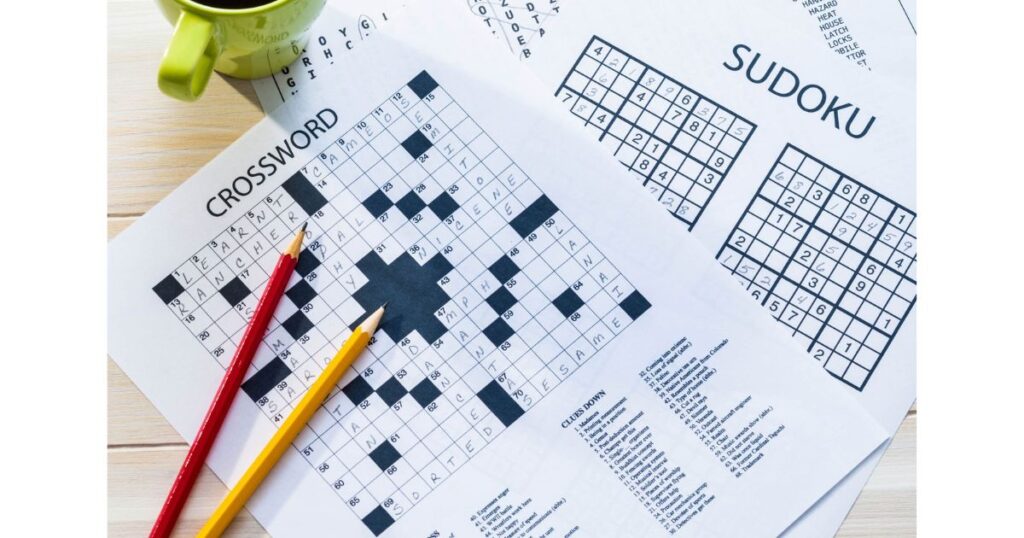Ever wondered how four little words could stump millions? Welcome to the world of “The Face of Change” – a seemingly simple yet devilishly clever NYT Crossword clue that’s become a staple of the New York Times Mini Crossword. This isn’t just any old puzzle piece; it’s a cultural phenomenon that’s got solvers scratching their heads and grinning from ear to ear.
In this deep dive, we’re going to unravel the mystery behind this iconic clue, exploring its cultural significance, the brilliant wordplay at work, and why it’s captured the imagination of puzzle enthusiasts across the nation. So, grab your thinking cap and a pencil (or your smartphone) – we’re about to flip the coin on one of the most intriguing aspects of modern crossword culture.
The NYT Mini Crossword: A Pocket-Sized Phenomenon
Before we dive headfirst into “The Face of Change,” let’s set the stage with a quick look at its home turf – the NYT Mini Crossword. Launched in 2014, this bite-sized brain teaser has become the espresso shot of the puzzle world: quick, potent, and utterly addictive.
Unlike its big brother, the traditional NYT Crossword, the Mini is designed to be solved in minutes, not hours. It’s the perfect mental snack for our fast-paced, smartphone-obsessed world. With just a 5×5 grid, every word counts, and every clue is a potential gem of wordplay or pop culture savvy.
The Mini’s popularity has skyrocketed, becoming a daily ritual for millions. It’s not just a game; it’s a shared cultural touchstone, sparking conversations and friendly competitions from coast to coast. In a world of fleeting trends, the Mini has proven it’s here to stay, one clever clue at a time.
Decoding “The Face of Change”: Anatomy of a Clever Clue
Now, let’s zoom in on our star player: “The Face of Change nyt crossword clue”. At first glance, it might seem straightforward. But like any good magic trick, its brilliance lies in its simplicity.
The answer? HEADS.
But why? Let’s break it down:
- Literal meaning: The “face” on a coin is the head side.
- Metaphorical meaning: “Change” can refer to coins or to transformation.
- Wordplay: “Face” can mean both a visage and to confront or deal with something.
This clue is a perfect storm of language and wordplay, combining multiple meanings into a compact, four-word package. It’s precisely this kind of multilayered cleverness that makes the NYT Mini Crossword a cut above your average word puzzle.
The Cultural Impact of “The Face of Change” Clue

The beauty of “The Face of Change” lies not just in its cleverness, but in how it reflects and shapes American culture. It’s a tiny linguistic mirror, reflecting our obsession with wordplay, our financial system, and even our decision-making processes (who hasn’t flipped a coin to make a choice?).
This clue has transcended the puzzle page to become a part of our daily discourse. It’s referenced in social media posts, debated in online forums, and has even made appearances in popular TV shows. The phrase has become shorthand for clever thinking, a secret handshake among word nerds.
Moreover, “The Face of Change” embodies the evolving nature of language itself. It plays with multiple meanings, forcing us to think flexibly and embrace ambiguity – skills that are increasingly valuable in our complex, rapidly changing world.
Solving Strategies: Cracking the Code of Change

For those new to the NYT Mini Crossword, clues like “The Face of Change” can seem daunting. But fear not! Here are some strategies to help you tackle this and other tricky clues:
- Think metaphorically: Often, the most obvious meaning isn’t the right one.
- Consider multiple meanings: Many words in English have several definitions.
- Look for puns and wordplay: The Mini loves a good play on words.
- Stay up-to-date on current events and pop culture: The Mini often references recent happenings.
- Practice, practice, practice: The more you solve, the more you’ll tune into the Mini’s wavelength.
Remember, puzzle-solving is a skill that can be developed. Each time you encounter a clue like “The Face of Change,” you’re not just filling in boxes – you’re engaging in a mental exercise that boosts cognitive functions like pattern recognition and lateral thinking.
The NYT Mini Crossword in Popular Culture
The Mini, and clues like “The Face of Change,” have become fixtures in popular culture. They’ve been featured in movies, TV shows, and even become plot points in novels. Celebrities have shared their solving times on social media, sparking friendly competitions among fans.
This cultural penetration goes beyond mere entertainment. The Mini has influenced how we think about language, encouraging a playful, multifaceted approach to words. It’s not uncommon to hear people describing real-life situations using crossword-inspired language, or to see Mini-style clues popping up in advertising and social media campaigns.
Why “The Face of Change” Resonates with Solvers
There’s something deeply satisfying about cracking a clue like “The Face of Change.” It’s not just about getting the right answer; it’s about the “aha!” moment when the pieces click into place. This psychological appeal taps into our love of puzzles, our desire for mental challenges, and our appreciation for clever wordplay.
Moreover, this clue challenges our perception of language. It forces us to think flexibly, to consider multiple meanings simultaneously. In a world that often demands black-and-white thinking, “The Face of Change” reminds us of the beautiful ambiguity of language.
The Face of Change: A Gateway to Crossword Addiction
For many solvers, clues like “The Face of Change” are the hook that draws them into the world of crosswords. The satisfaction of solving such a clever clue can be addictive, leading solvers to tackle more and more puzzles.
This progression often leads from the Mini to the full-sized NYT Crossword, and beyond. Many solvers report that their Mini habit has improved their vocabulary, problem-solving skills, and even their appreciation for language and wordplay.
Moreover, the Mini has fostered a vibrant puzzle-solving community. Online forums buzz with discussions about the day’s puzzle, while social media is alight with people sharing their solving times and favorite clues.
The Future of Clever Clues in the NYT Mini

As language evolves and cultural references shift, so too will the clues in the NYT Mini. The challenge for puzzle creators will be to maintain the delicate balance between accessibility and challenge, ensuring the Mini remains both approachable for newcomers and stimulating for veteran solvers.
We can expect to see more clues that play with digital culture, reflect changing social norms, and incorporate new vocabulary. But classics like “The Face of Change” are likely to endure, serving as anchors in the ever-changing sea of language and wordplay.
Conclusion: Facing the Change, One Puzzle at a Time
“The Face of Change” is more than just a crossword clue. It’s a testament to the enduring power of wordplay, a daily mental workout, and a shared cultural touchstone. It challenges us to think differently, to approach language with playfulness and flexibility.
As we’ve seen, this little clue packs a big punch, embodying the clever, concise spirit of the NYT Mini Crossword. It’s a reminder that sometimes, the smallest things can have the biggest impact – much like the Mini itself.
So the next time you’re faced with this clue, or any other tricky crossword conundrum, remember: you’re not just solving a puzzle. You’re participating in a rich cultural tradition, exercising your brain, and maybe, just maybe, changing the way you think about language itself.
Ready to face the change? Grab your phone and dive into today’s NYT Mini Crossword. Who knows? You might just find yourself on the flipside of a new obsession!
Click Here For More Blog’s:

My work is dedicated to helping individuals navigate the financial world with confidence and achieve their financial goals. Follow me for practical tips and advice on all things finance.

